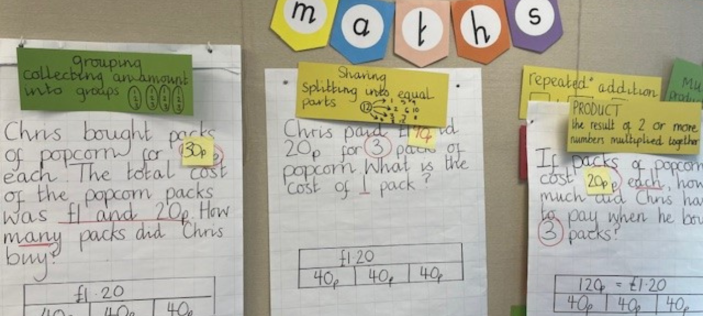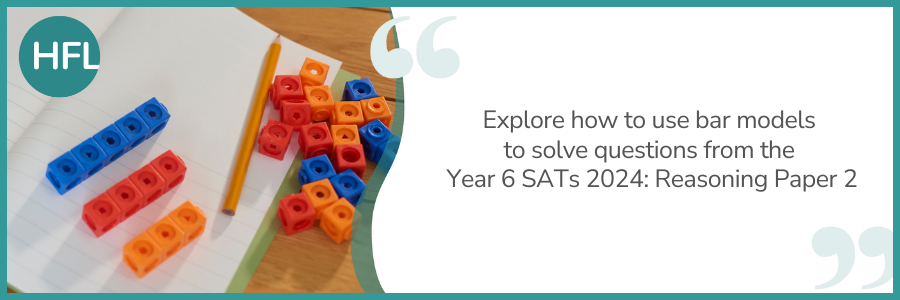
Bar modelling as a powerful maths tool
Bar modelling is an often-misunderstood tool in mathematics. Rather than a strategy to solve problems, it is more a tool to expose ‘the maths’. This is explored by Charlie Harber in her 2018 blog, KS2 Maths SATs Papers: the power of the bar model.
The bar model, when used consistently, can support children in tackling complex problems by enabling them to identify the knowns, unknowns and calculations.
Bar models are pictorial representations used to draw out parts and wholes to support with visualisation of a maths problem or scenario. Once the structures of additive and multiplicative models are understood, they can make something that seems complicated feel simple!
Developing a secure understanding of bar models starts in the Early Years and throughout Key Stage 1 where the foundations of part-whole relationships are explored.
In Key Stage 1 and Lower Key Stage 2, children should be given opportunities to explore both additive and multiplicative models.
Additive models will include structures of:
- aggregation – where two parts are combined
- augmentation – where one quantity is increased by an amount
- take away – where one quantity is decreased by an amount
- comparison – finding the difference between amounts
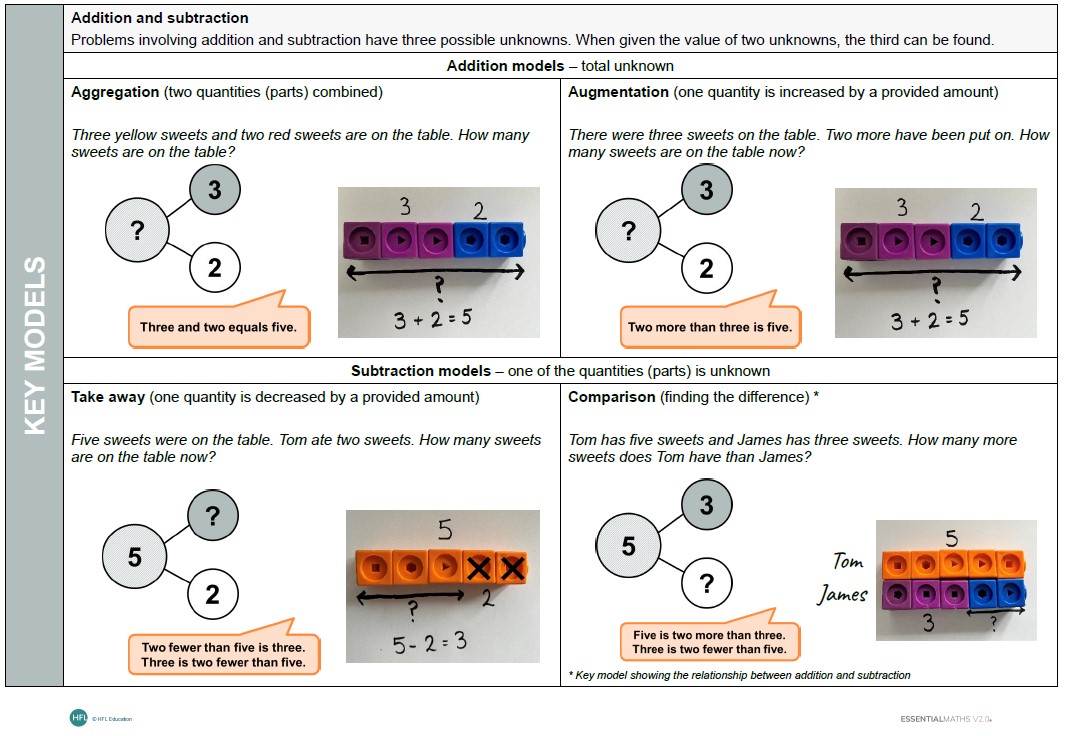
Key multiplicative models will include:
- multiplication – where the group size and group number are known
- sharing – where the product and number of groups is known
- grouping – where the product and group size is known
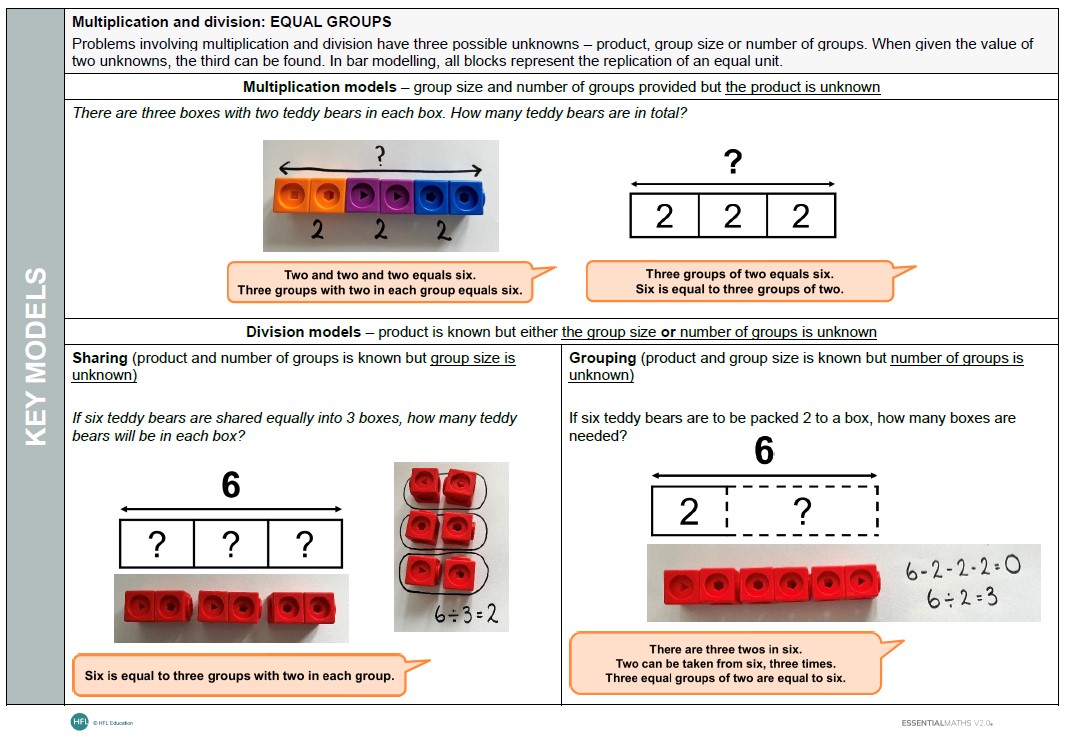
If these key models are explored and understood, children can combine structures when tackling more complex worded scenarios as exemplified in the following questions from reasoning paper 2 from the 2024 Year 6 SATs.
Of the Year 6 maths SATs papers, children often find the reasoning papers the most challenging, as their ability to unpick the maths and find a starting point is challenged, as well as their maths subject knowledge.
Exploring Year 6 maths questions – structuring thinking and building confidence
Below, I have explored bar modelling with three Year 6 maths questions from the 2024 Reasoning Paper 2, and the dialogue I would use with children to support them.
Note that the language of part and whole is used in all the questions and is a concept built upon from the Early Years.
Question 11 – bar modelling to expose the need for multiplication and division:
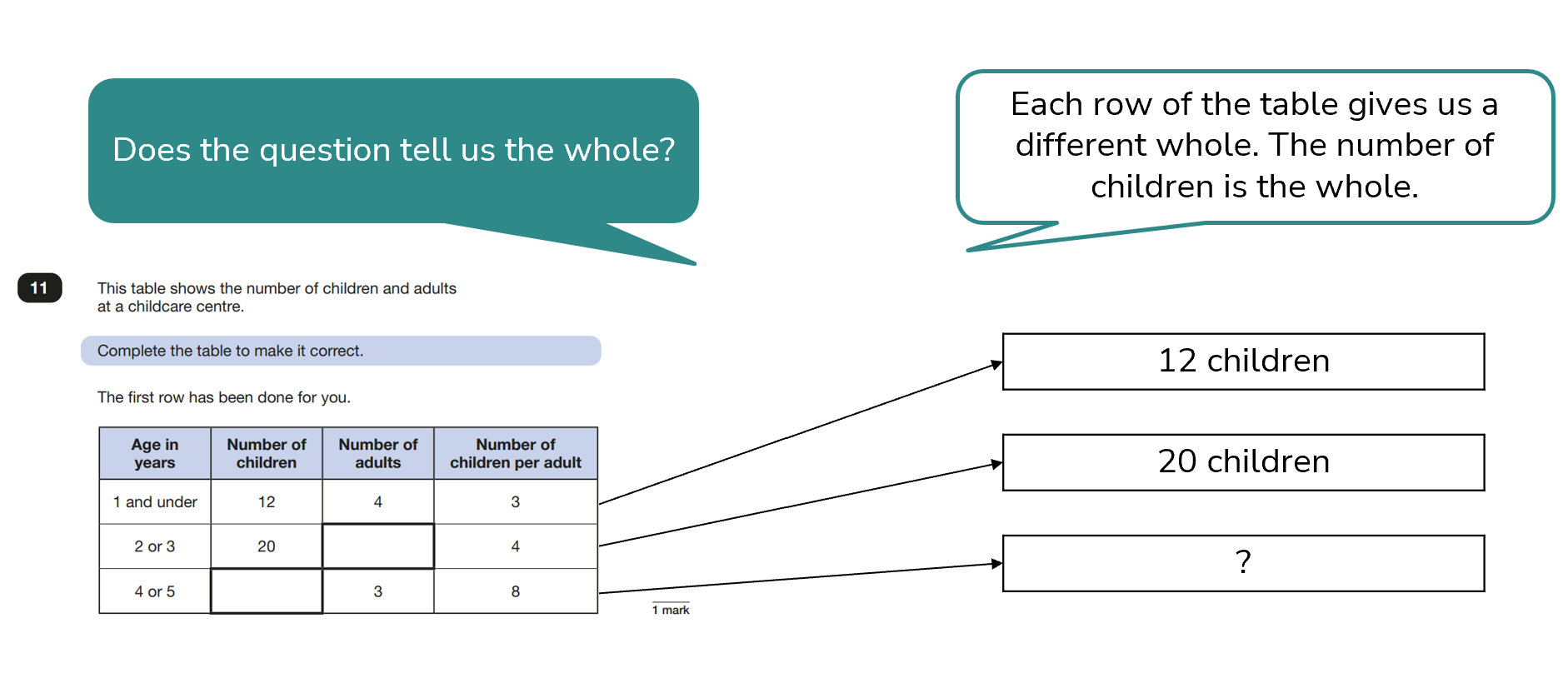
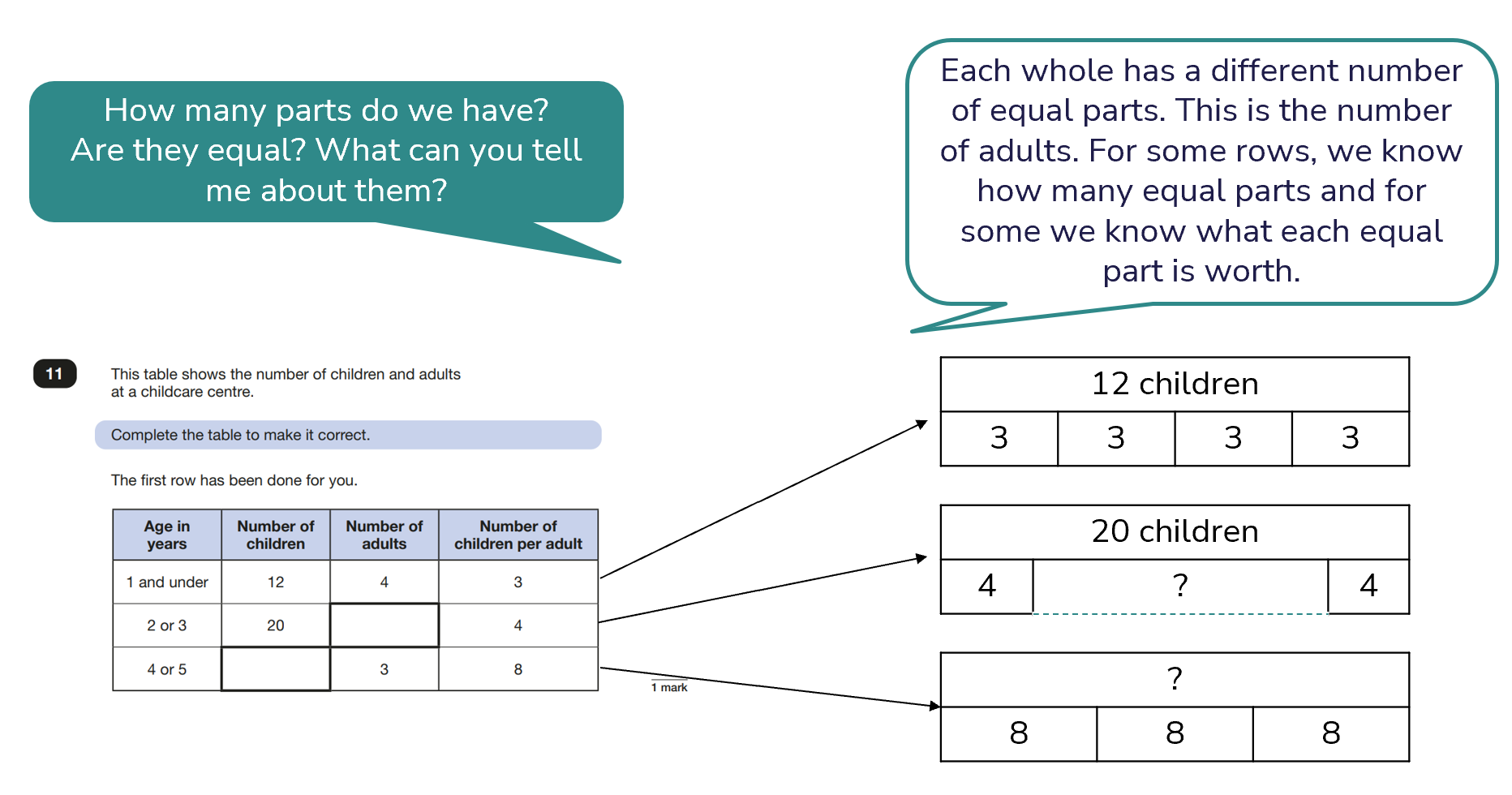
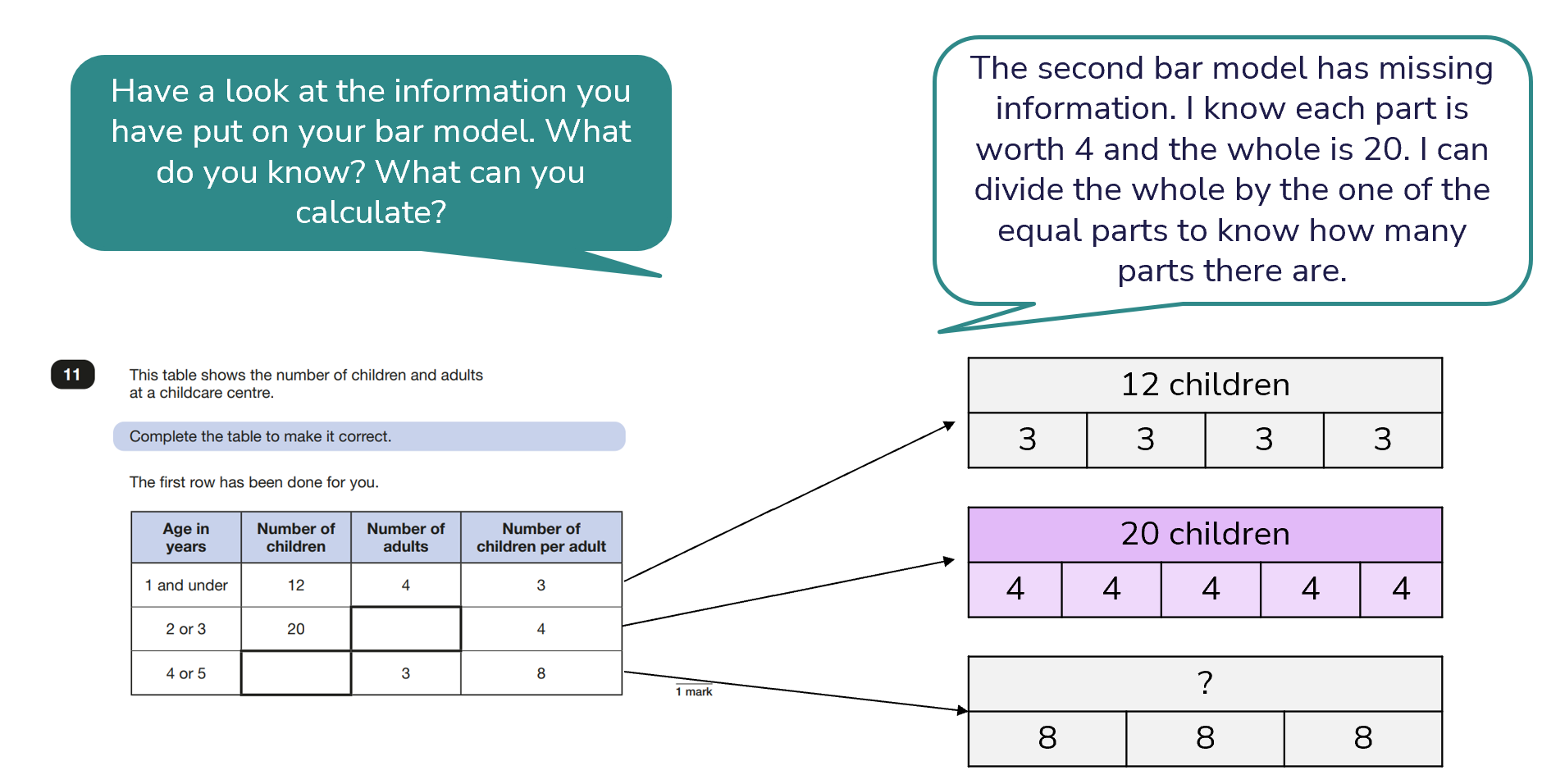
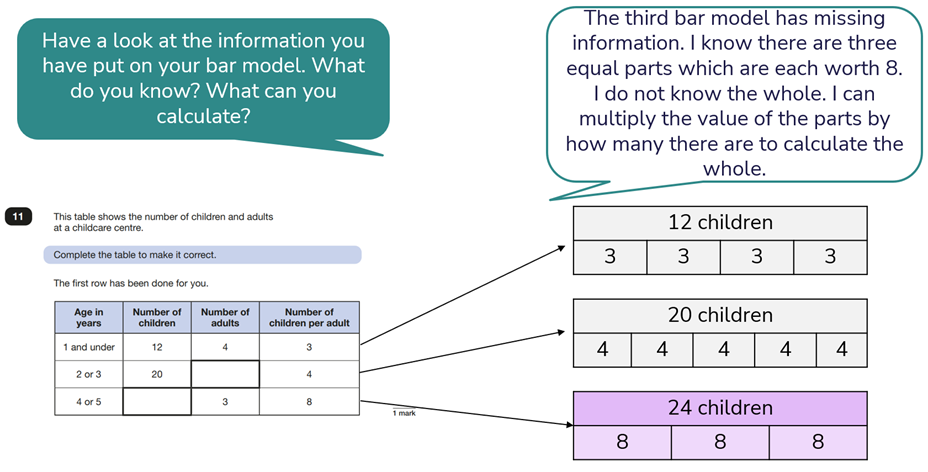
Solutions
The missing ‘number of children’ = 24
The missing ‘number of adults’ = 5
Question 17 – bar modelling to expose the need for addition and subtraction:
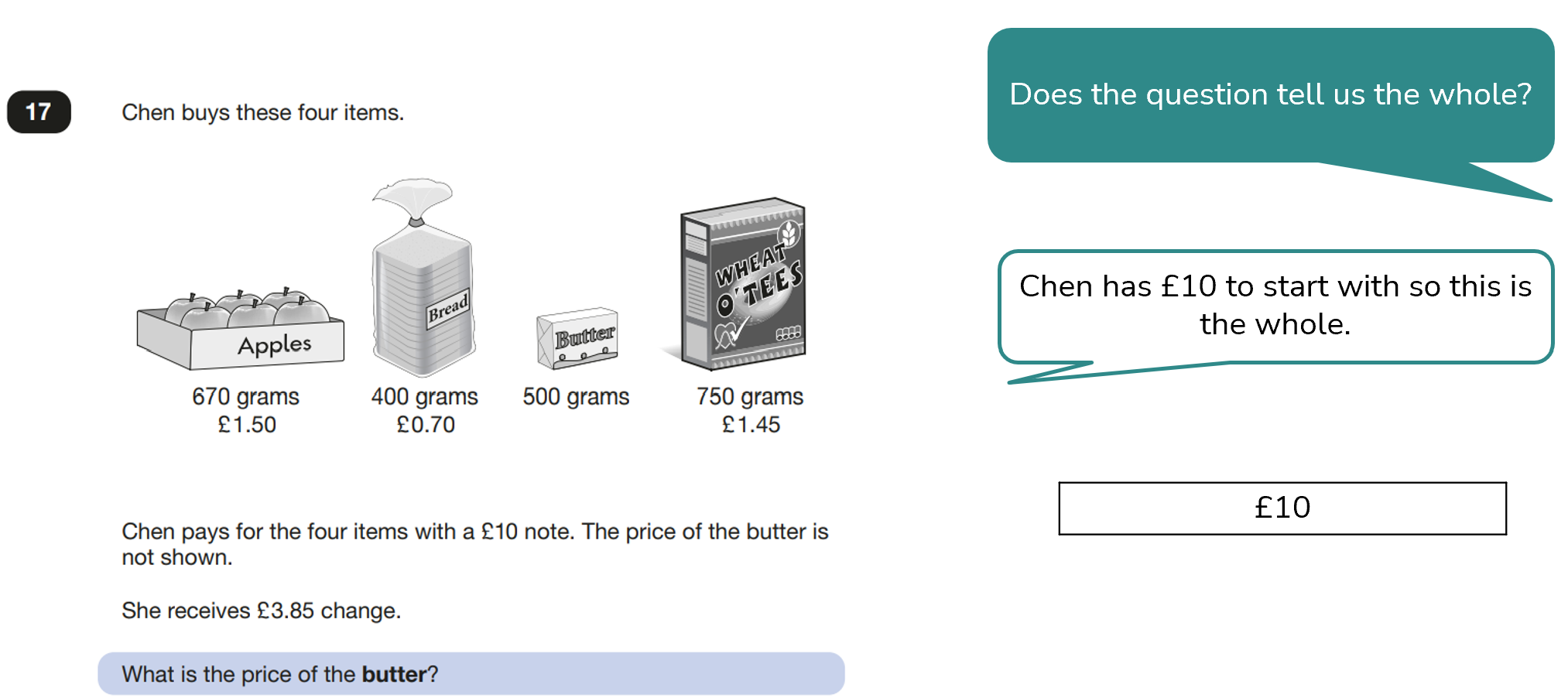
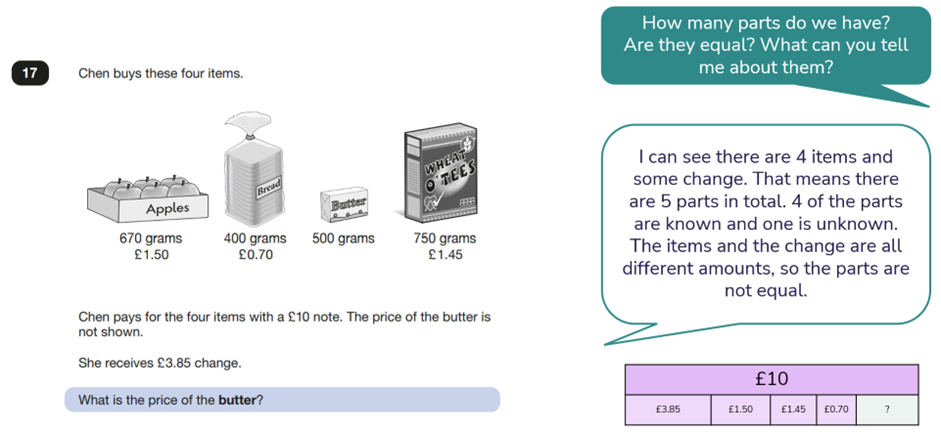
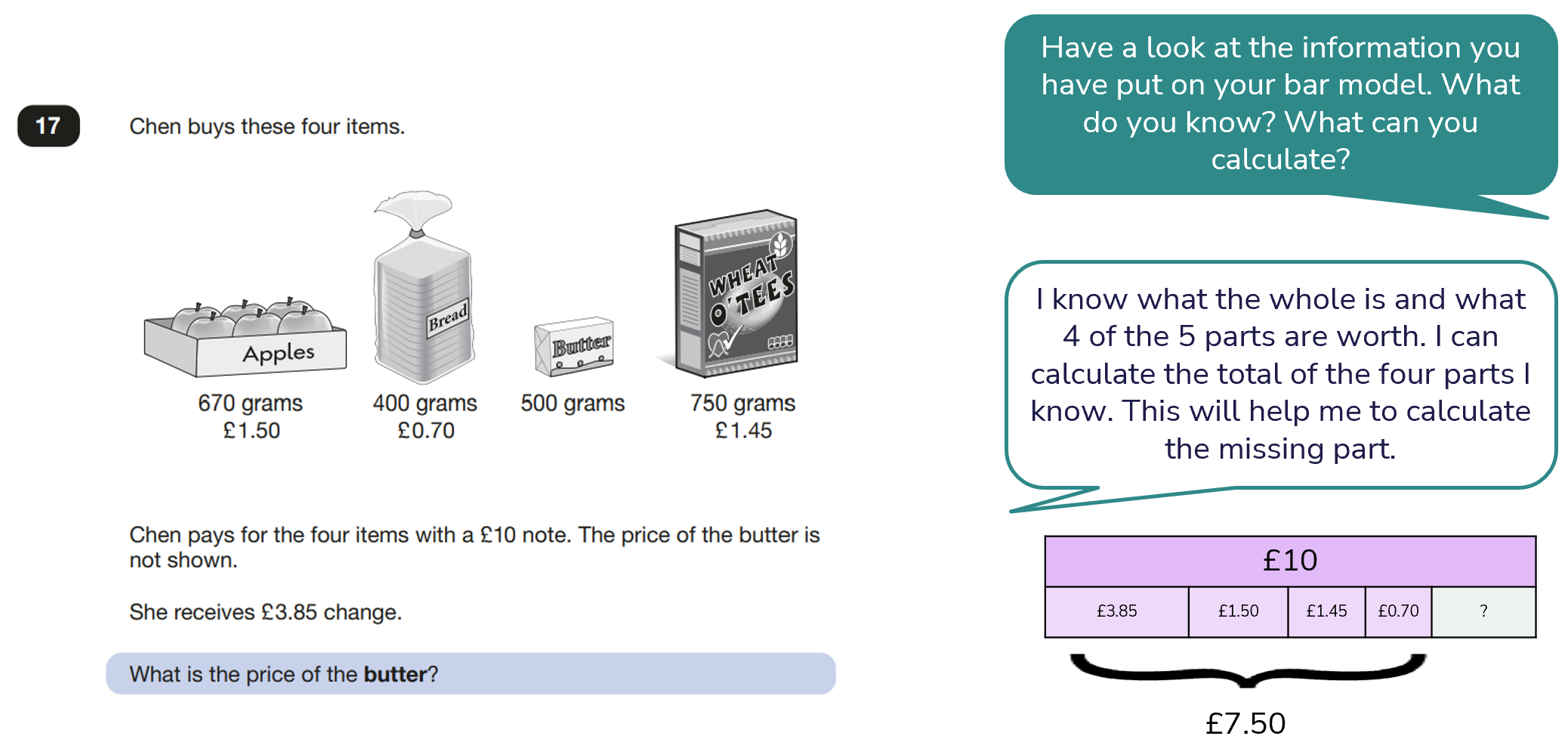
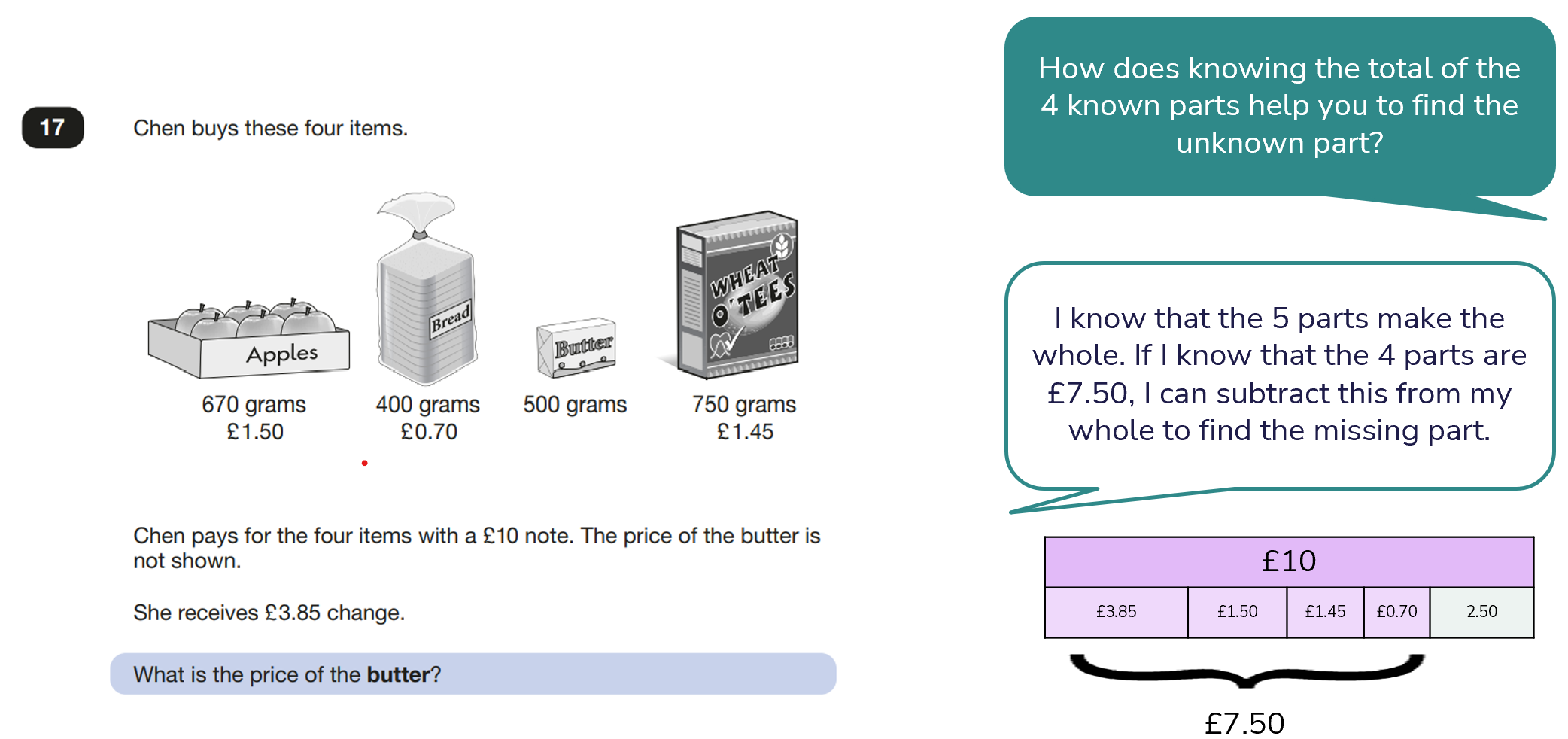
Solution
The price of the butter is £2.50
In this case, the bar model also helps to identify that the weights provided are distractors and are not needed to solve the problem.
Question 19 – bar modelling to expose the need for addition and subtraction:
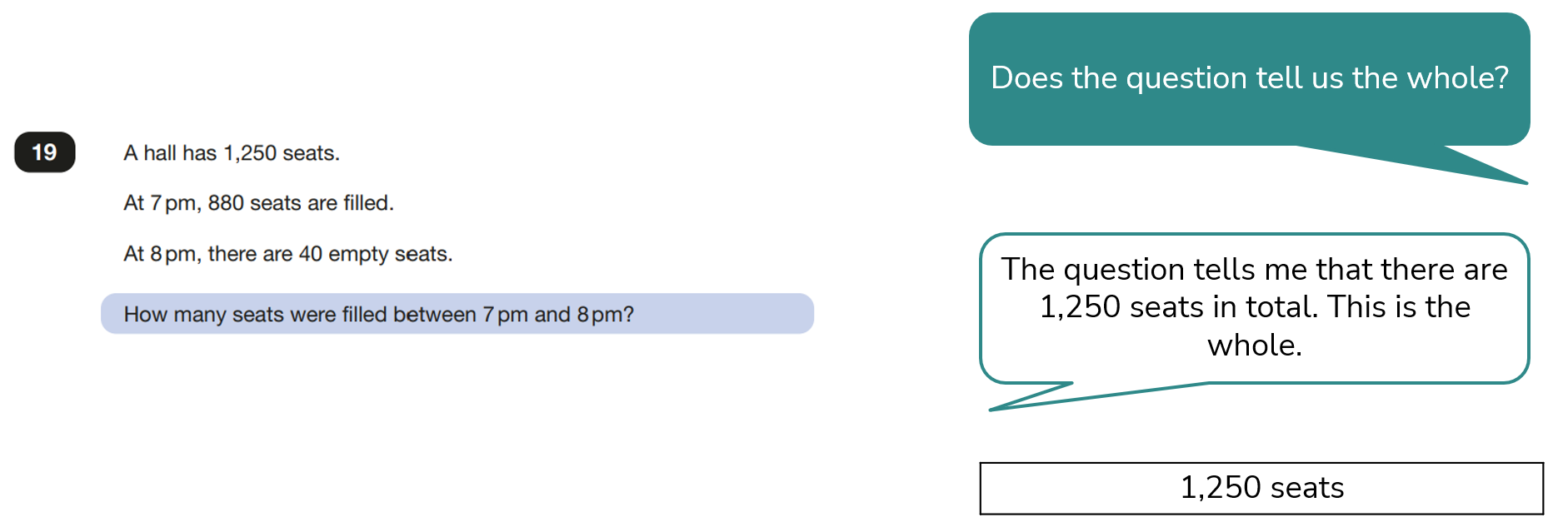
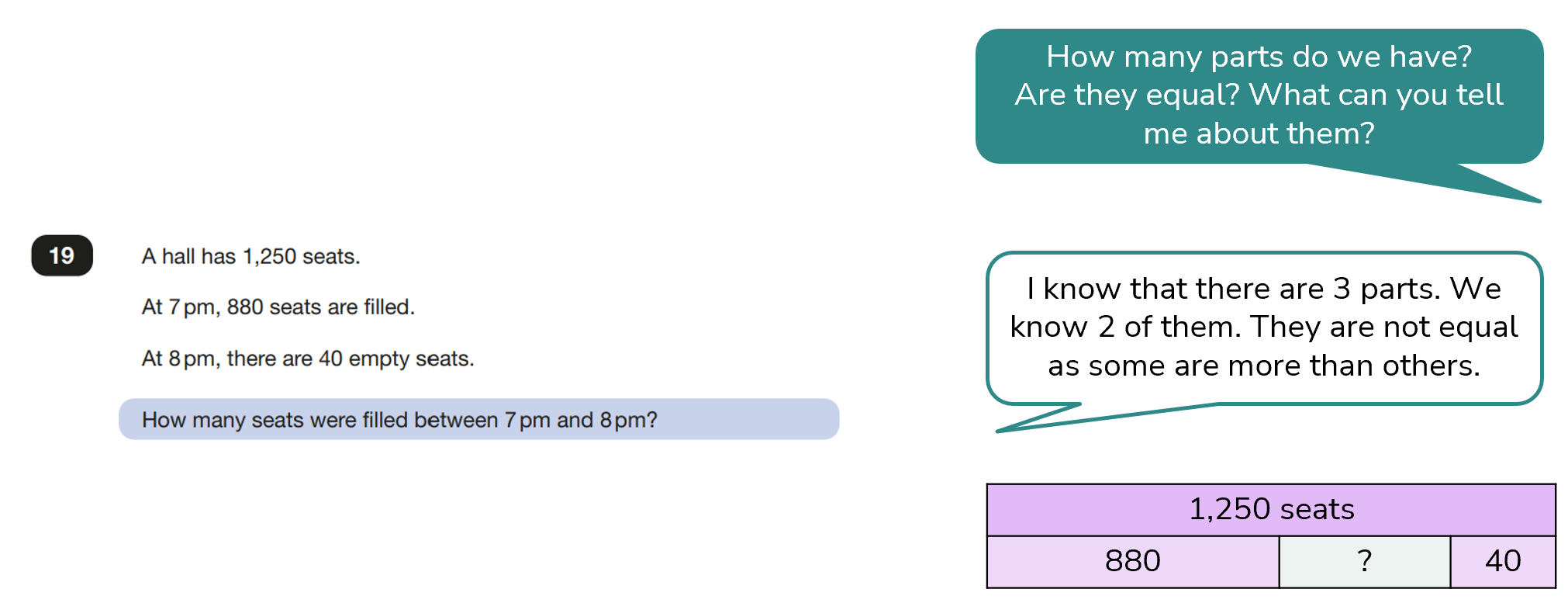
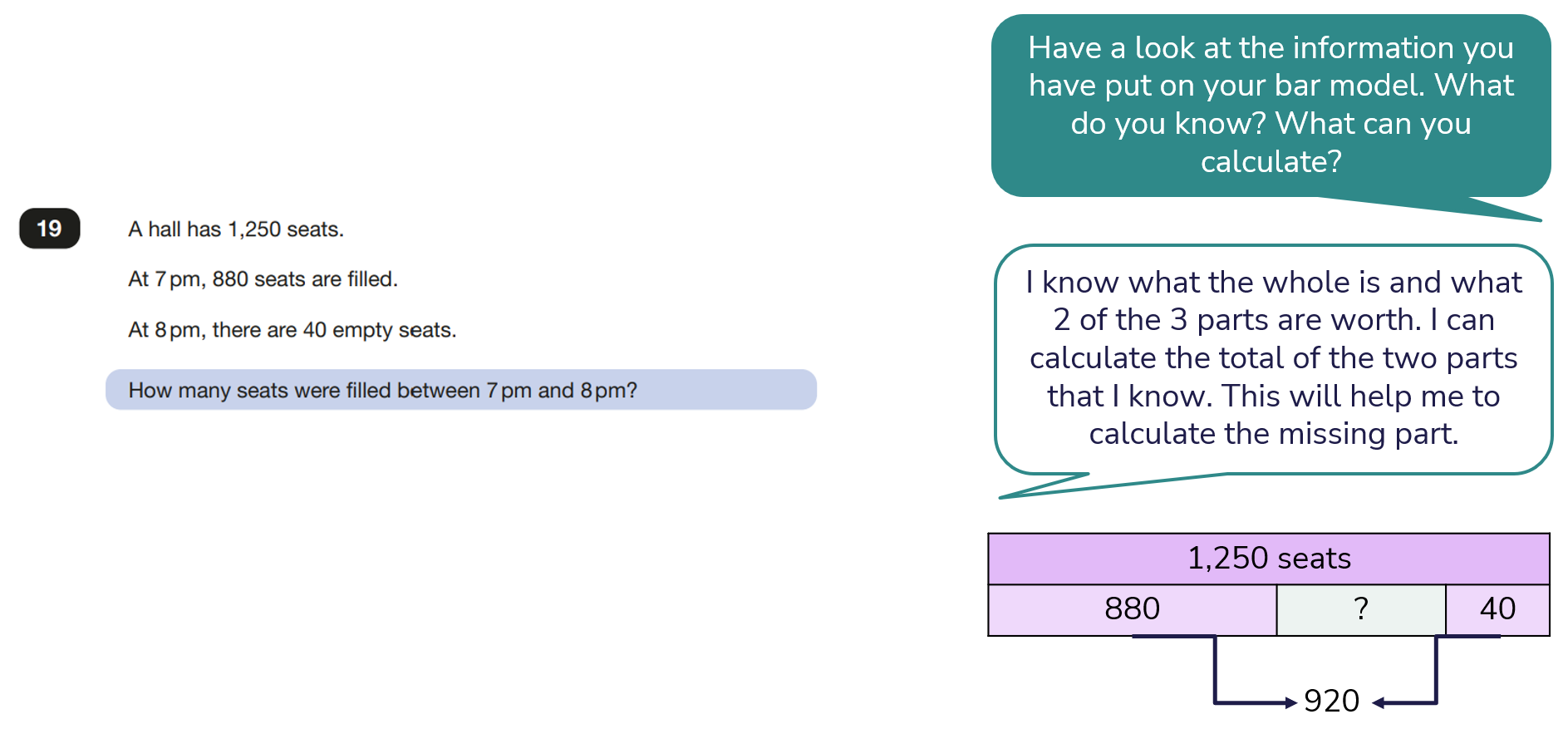
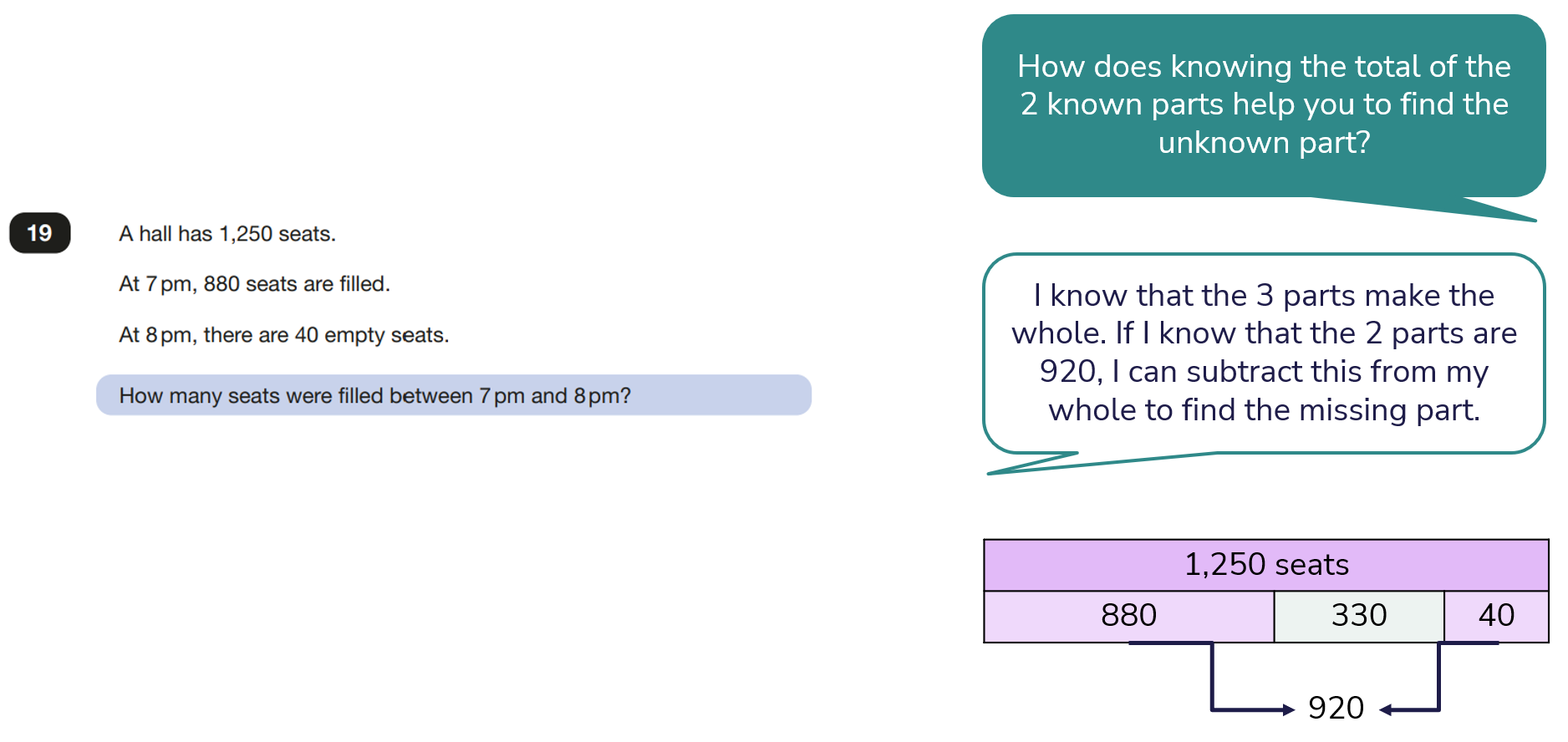
Solution
330 seats were filled between 7pm and 8pm.
If you enjoyed this blog, keep an eye out for part 2, where my colleague will explore questions from reasoning paper 3 from the Year 6 SATs 2024.
Further professional development
Our popular training is back this year in a new format.
Across four half-day sessions, we unpick tools for supporting children in meeting age-related expectations in maths using a range of different strategies, including the bar model!
Statutory assessment outcomes from schools who participated in this training in 2023/24 show that children made, on average, 6 months more progress than their 2022/23 cohorts.
Resources you may be interested in
Bar modelling in maths progression
- Download sample pages
- A combination of photos of concrete resources, pictorial bar models and abstract calculations brought together to exemplify how to solve problems from across the maths curriculum.
Year 6 maths gap finder: SATS preparation toolkit
- Diagnostic summative assessment papers for early identification of gaps
- Resources to support teaching and rehearsal of arithmetic and reasoning
- a suite of resources and analysis tools to identify specific areas of learning strength and development for pupils and classes when using any past SATs papers as practice (2016-2024).
References
Contains material developed by the Standards and Testing Agency for 2024 national curriculum assessments and licensed under Open Government Licence v3.0.

